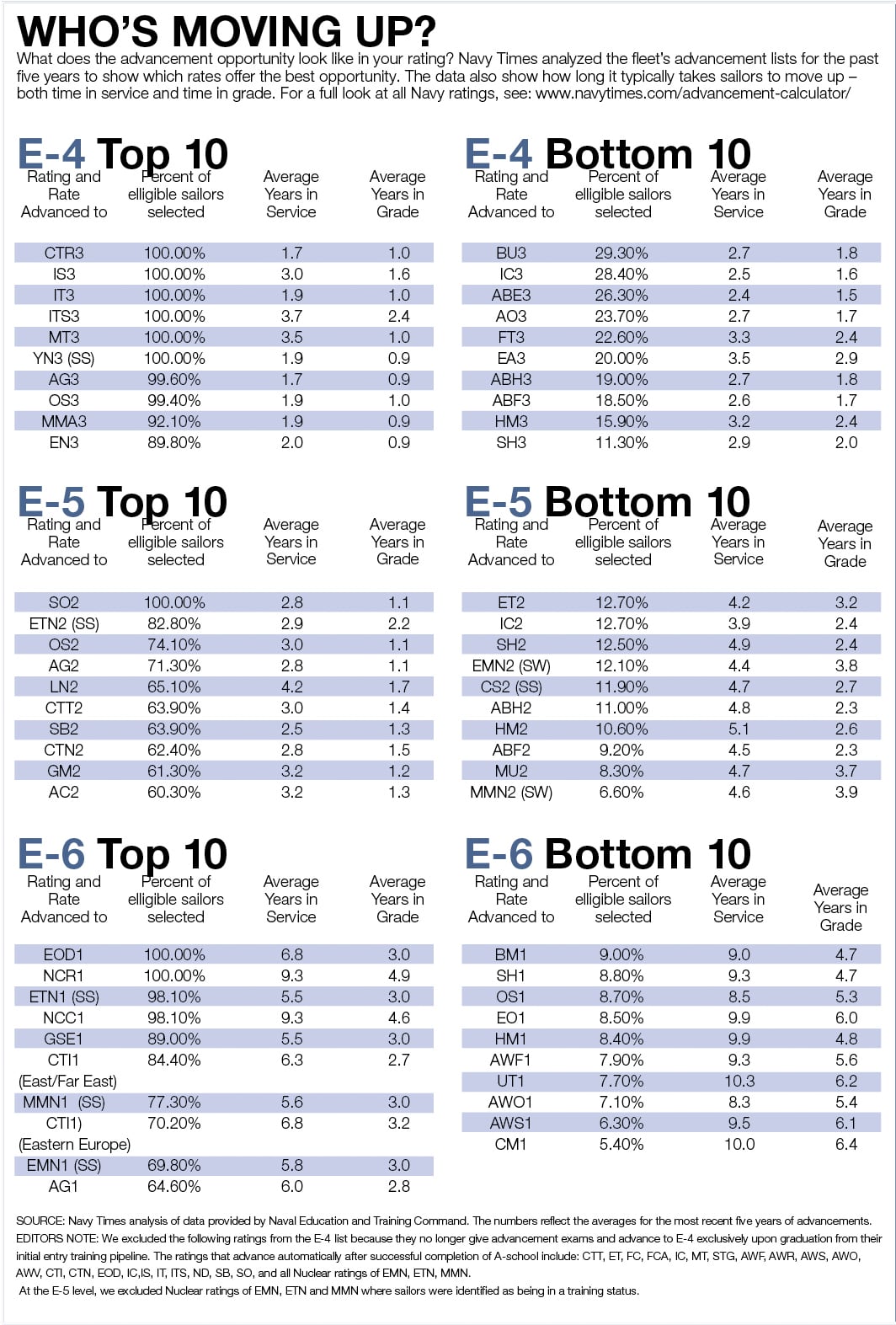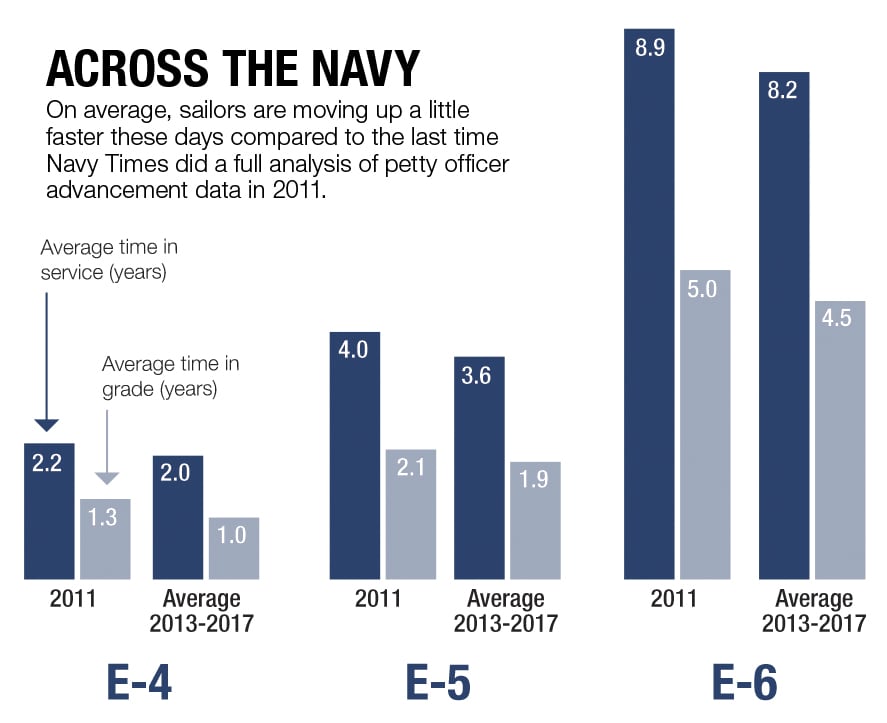It’s an up-or-out Navy. And most sailors want to know when they can expect their next advancement.
With the Navy set to release the fall advancement results before Thanksgiving, the hard fact is that nearly three-quarters of all sailors passing their tests won’t be advanced, meaning these sailors must set their sights on next March, when the cycle starts all over again.
Many factors go into a sailor’s advancement. Among them: Performance evaluations, test score, awards, time in grade and even the number of times you’ve passed your exam but failed to meet the cutoff for advancement.
But the biggest factor that sailors have no control of is simply the number of vacancies open in a particular rating.
The Navy calls this “statistic “opportunity,” meaning the number of open slots, and it directly affects the percentage of eligible sailors who passed their advancement exams who are ultimately tapped for advancement.
There is a big difference among the Navy’s ratings, as some jobs allow sailors to advance quickly while others much less so.
Navy Times has been tracking advancement data for years. Over time, many communities and ratings have proven to be traditionally strong performers, while others are not.
For example, making first-class petty officer will, on average, take about five and a half years for a gas turbine systems technician or nuclear trained machinist mate. But reaching the same E-6 paygrade will take about 10 years for a utilitiesman, equipment operator or construction mechanic.

Navy Times recently obtained five years of advancement data from Naval Education and Training Command, offering a detailed look at every rating and paygrade across the fleet.
We crunched this data to offer a five-year average, a snapshot showing both advancement opportunity — the percent of sailors who move up — and the average time in service and time in grade for those sailors who step up in rank.
The snapshot, however, does come with a disclaimer from the Navy:
“The data is historic and rating advancement opportunities change each year and the data provided does not predict future advancement opportunities,” said Lt. Cmdr. Kate Meadows, spokesperson for NETC, which handles the grading of tests, crunching final multiple scores of sailors and tracking overall advancement.
Despite the disclaimer, the data shows that many ratings have historically good advancement opportunity.
Special warfare and operations ratings like SEALs and divers, as well as EOD techs, nuclear power sailors and Navy counselors fit this description.
But others, such as hospital corpsmen, tend to hover near the bottom simply because of how the rating is built, comprised of many junior sailors and fewer petty officers.
Lately, many of the Navy’s Seabee ratings have shown slow advancement due to force structure changes.
The Navy on Monday released the quotas for this advancement cycle, which showed that sailors, on average this year have a slightly better chance of moving up compared to the past several years.
Overall, there has been little change over time. Even though opportunity comes and goes in the individual ratings, the average time it takes the average sailors to advance to each of the three petty officer grades hasn’t fluctuated much in the past decade, according to a Navy Times analysis of the advancement data.

HOW DOES YOUR RATING LOOK?
Navy Times has published the Navy Times Advancement Calculator, a first-of-its-kind online web tool where you can look at your own rating and see the accompanying advancement opportunity trends.
The data is a good gauge to compare your own progress up the ranks, or possibly to use as a goal to shoot for or surpass altogether.
The tool also allows you to compare your rating with others. If you’re thinking about making a switch into another skill, this provides you with important insights into how advancements are trending there.
Check out the tool to find the following for any and all Navy ratings:
- Percentage of sailors advanced
- The average time in service for sailors who advance in your rating
- The average time in grade for sailors who advance in your rating
- Minimum and maximum advancement times, showing how early and how late some are advancing.
Knowledge is power. Knowing where opportunity lies in ratings similar to yours will become vital information as the Navy moves towards the improvements promised in the Sailor 2025 initiative.
Those reforms promise to give sailors more opportunities to qualify in related skills, and to advance in them if there’s an opening.
But data analysis is not going to replace the time-tested routes to moving up in the Navy: Working hard on the job to get the best evaluations and in-rating experience. There’s no substitute for studying in the months leading up to your rating exam. And finding a job that you truly enjoy will make all of that a lot easier.
Mark D. Faram is a former reporter for Navy Times. He was a senior writer covering personnel, cultural and historical issues. A nine-year active duty Navy veteran, Faram served from 1978 to 1987 as a Navy Diver and photographer.





